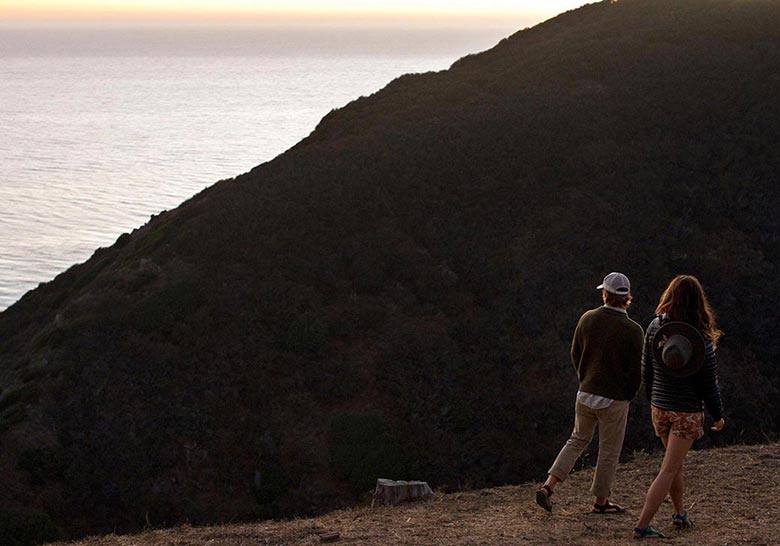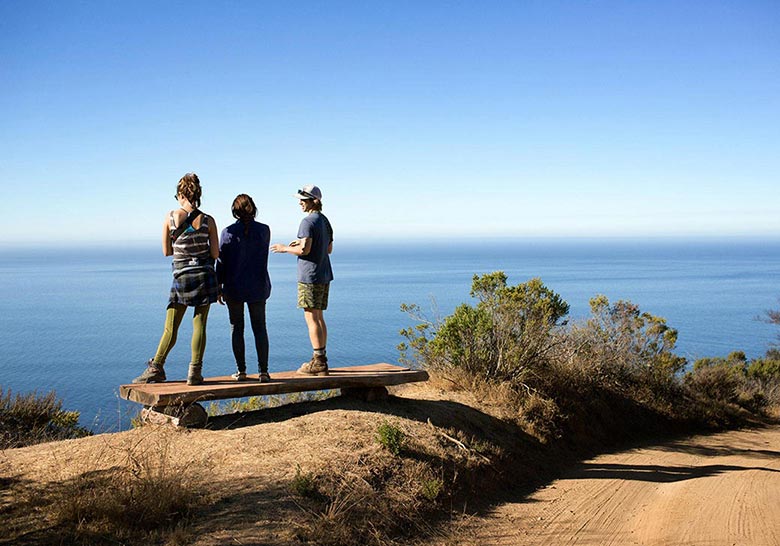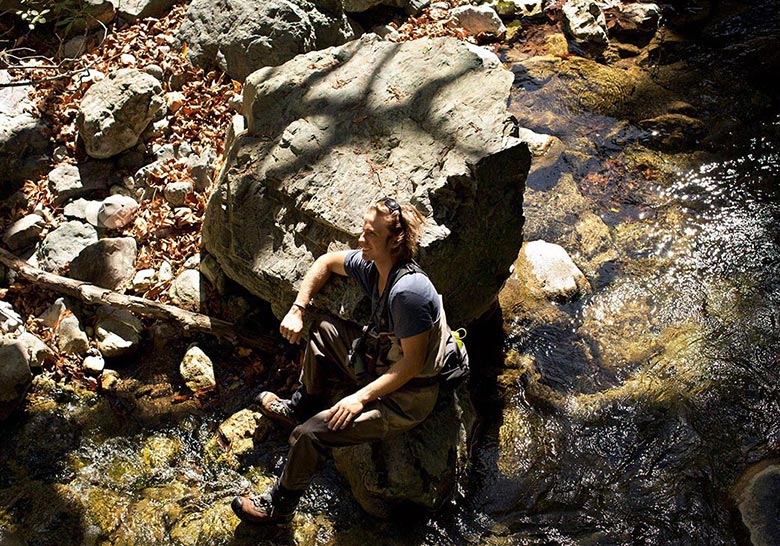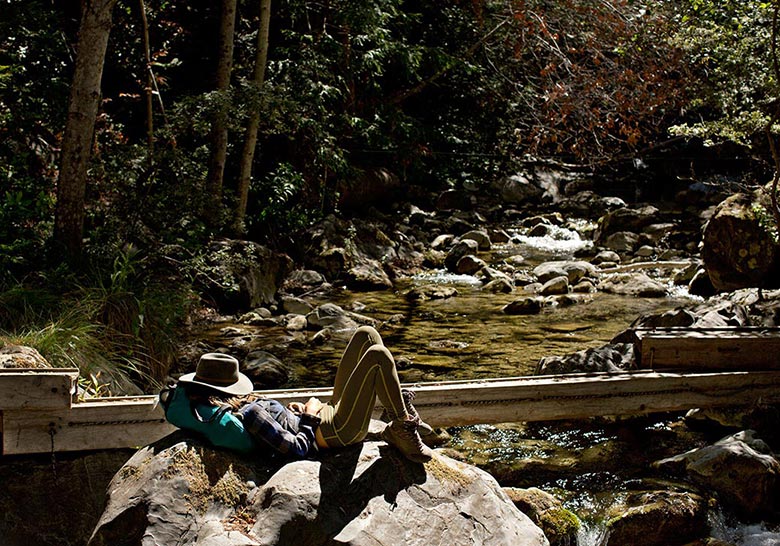




When I was sixteen I didn’t know that there were just a few dozen California condors left in the world. Some of them must have been flying overhead as I scrambled along the rocky Big Sur coastline looking for surf. I had no idea that some of the world’s tallest and oldest trees provided me with shade in the heat of the day, and that one of the world’s most active whale migration routes lay just beyond the shoreline. And I probably couldn’t have identified a California Towhee even if one was sitting in my lap.
My world was simple—surf, soccer, friends, girls. With these priorities in mind, my friends and I would scrape together our rag-tag assortment of surfboards and wetsuits, pile into a borrowed car, and scream down California’s Highway One in search of mountains, new adventures, and waves. As we cruised south, the right-hand point breaks in Santa Cruz were always our first stop. We would do our best to find an uncrowded stretch of coastline, get a session under our belts, grab a burrito in town, and then make the final haul toward the vast Big Sur coastline.
Years later, Big Sur is still the epic destination on many road trips, but now I’m also heading there to study the freshwater ecosystems that braid the hills and rugged outcroppings of the Santa Lucia Mountains. I’m a graduate student in the Integrative Biology Department at U.C. Berkeley. I focus on freshwater food webs, especially the ecology of the American dipper, a songbird known for building large, mossy nests and its propensity to sing and swim long distances underwater in search of small salmon, trout, and aquatic insects.
I’ve been studying a population of dippers that live near Big Creek, whose lower watershed is protected in the greater Landells-Big Creek Reserve, a 3,848-acre wilderness managed by the University of California for scientific research. American dippers, like rainbow trout and their seagoing counterparts, steelhead trout, rely on a community of aquatic insects for sustenance, that in turn rely on the ebb and flow of algal proliferations and fall’s procession of culled leaves. Because its diet consists of insects and fish that are sensitive to pollution or disturbance, the dipper’s well-being is a reliable indicator for overall stream health. With California experiencing some of the worst droughts on record, American dippers are disappearing with the water.
Thousand-year-old sequoias (with the species name sempervirens, meaning forever living) help to keep the Big Creek world shaded from the hottest daylight sun. These coastal redwoods significantly shape the dipper’s world and provide vital shade to this water system. Scores of other birds also rely on these trees for insects, grubs, and spaces for resting and building nests. This food web is a delicate ecosystem that is observed, studied, and discussed in textbooks by ecologists. But for me, by and large, my life as a young ecologist consists of camping out in these woods and running around the creek trying to get my eyes on as many dippers as possible.
I get a relaxed sense of freedom when I’m in the outdoors, but there’s so much to do (especially when dippers are few and far between) that I’ve come to rely on my girlfriend and professional photographer, Meg Haywood-Sullivan, moonlighting as my field assistant. After a few years of carrying nets, notebooks, and binoculars, she’s become a vital asset. Meg’s even learned most of the common birds and plants in the area—which makes our morning coffee and bird watching all the more exciting.
Most years, I start my fieldwork in the spring. Typically, the first dipper nests are constructed in March or April, and the earliest clutch, often three to four eggs, hatch roughly sixteen days after being laid. Some breeding pairs have even been known to have up to three clutches in a summer. What a handful. You should see the little guys chasing their parents up and down the creek begging for food.
My experience over the past two years, however, has been unusual. By June, when the river should be filled with the songs of multiple breeding pairs of dippers, I found just two. I looked and looked, under each log-jam, and around each bend, waiting for their call, or even a sign that they were near. Each of the past two summers ended without good news.
My favorite campsite at the Big Creek reserve, Whale Point, is perched on an exposed cliff a few hundred meters above the Big Sur coastline. More often than not, you’re outnumbered twenty to one by gray, humpback, and blue whales, whose deep breathing can often be heard high into the mountains, as their low, wispy pitch reverberates off the rocky outcroppings.
At Whale Point, as the sun rises, feverishly busy, chatting, dashing, and diving dark-eyed juncos, Anna’s hummingbirds, Steller’s jays, red-tailed hawks, American kestrels—North America’s smallest falcon—and at least one covey of California valley quail remind me the workday is starting. Our campsite sits in full morning sun as I pack the essentials for the day: waders, boots, field notebooks, binoculars, a camera, and enough water to stay hydrated throughout the hundred or so dusty, sun-scorched switchbacks that stand between Whale Point camp and my field laboratory at Big Creek.
Our often-foggy Northern California coast feels like summer in September but the animals here know its autumn. Bears are busier than ever, making sure to take full advantage of the acorns, juniper berries, and blackberries before they vanish for the year. The poison oak has turned dark red and the big leafed maples are chartreuse. Every time I look overhead, resident and migratory birds remind me that they have a lot of work to do.
As Meg and I scramble down to the water’s edge, I carefully look across each rock and cobble in search of my avian muse, the American dipper—North America’s only fully aquatic songbird. With binoculars in my hand, I set about observing the creek, noticing how it’s changed over the coarse of a year. Sometimes I wonder if the dippers recognize me or understand my passion to learn the ways of our natural world. I strive to understand the ebb and flow of these places so they can be better protected and also so that others (including my not-so-nature-savvy city friends) can learn and feel excited about the streams they swim in, the waves they surf on and the mountains they climb.
Concentrating these efforts on such a small region of California may seem narrow in focus and scale, but in reality, the interactions I observe and study in Big Creek sheds light on ecological processes unfolding across the West. Ultimately, graduate students like me are working to enhance our collective ecological understanding of the epic landscapes and destinations we all cherish and explore.



























